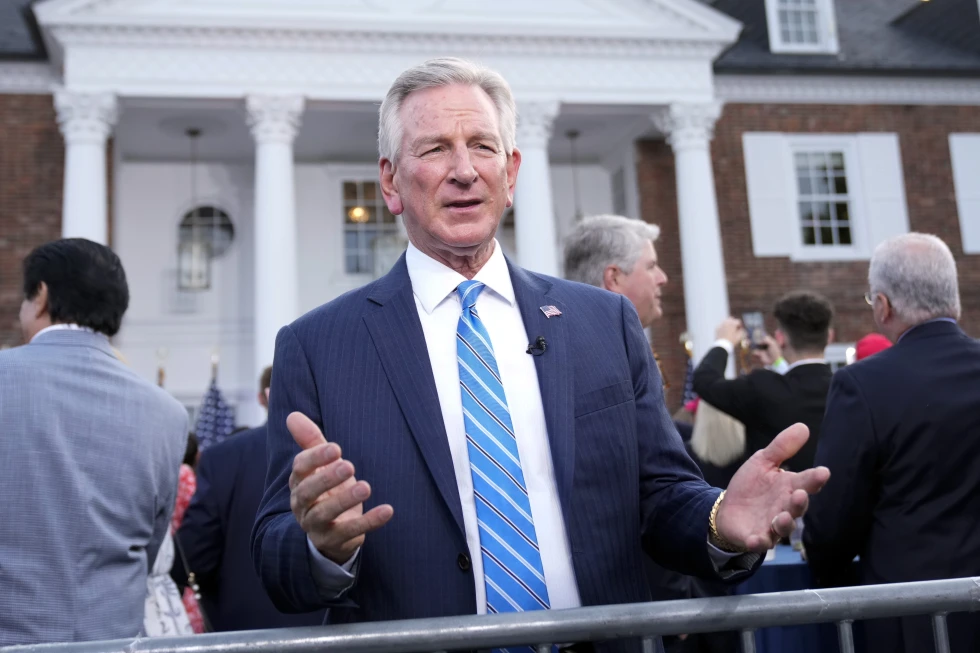On Tuesday, the credit rating service Fitch downgraded the U.S.A.’s credit rating from AAA to AA+. U.S. Senator Tommy Tuberville (R-Alabama) blamed President Joe Biden’s policies for the downgrade.
“For the second time EVER, the United States’ credit rating has been downgraded. The first time was under Joe Biden’s watch as VP,” said Sen. Tuberville on Twitter. “This is what happens when you spend money you don’t have and exercise ZERO fiscal discipline.”
For the second time EVER, the United States’ credit rating has been downgraded. The first time was under Joe Biden’s watch as VP.
— Coach Tommy Tuberville (@SenTuberville) August 3, 2023
This is what happens when you spend money you don’t have and exercise ZERO fiscal discipline.
Thanks, @JoeBidenhttps://t.co/dthyt9Uio8
Presently Fitch is the only major credit rating service to have downgraded the federal government’s credit rating.
Fitch said on Tuesday that the downgrade reflects an “erosion of governance” in the U.S. relative to other top-tier economies over the last two decades.
“The repeated debt-limit political standoffs and last-minute resolutions have eroded confidence in fiscal management,” Fitch said.
Tuberville previously expressed to reporters his frustration that the federal government has not addressed the spending issue.
“The American people are taxed to death,” Tuberville said. “We have got to figure out a pathway to reduce spending.”
Fitch is predicting that the economy will go into recession by the end of the year.
Press Secretary Karine Jean-Pierre blamed Republicans.
“President Biden has delivered the strongest recovery of any major economy in the world,” Jean-Pierre said. “And it’s clear that extremism by Republican officials—from cheerleading default to undermining governance and democracy, to seeking to extend deficit-busting tax giveaways for the wealthy and corporations—is a continued threat to our economy.”
The federal government is spending $1.57 trillion a year more than it is taking in revenues. This means that the federal government has to then go onto the bond market to sell $1.57 trillion in treasuries to make up the deficit. The government sells a mix of treasury bills, payable in 12 months or less, treasury notes, payable in 1 to 5 years, and treasury bonds, payable in more than five years. The most popular of these are the 10-year and the 30-year treasury. Institutional investors and individuals buy these bonds and wait for them to mature. They, like stocks, can also be traded on the market, so they always have a value. Generally speaking, interest on treasuries is not taxable, though the minimum tax rate provision may apply to certain taxpayers. To sell trillions in treasuries, the federal government has to pay more and more in interest to lure investors.
Money going into treasuries at higher interest rates means that banks, states, and local governments sell bonds to raise capital, and corporations that sell taxable bonds to raise capital have to offer more and more competitive interest rates to keep up. Many banks are now offering 5 percent interest on CDs to lure depositors. Money going into the bond market chasing guaranteed returns could, in theory, eventually lead to money not going into stocks. This has not happened because this year has generally been good for stock investors.
The total U.S. debt has topped $32.7 trillion, and the cost of servicing the debt is $652 million a year and climbing.
“We cannot live with $32 trillion in debt,” Tuberville said. “We need leadership in the White House to get this over.”
Both Tuberville and Sen. Katie Britt voted against the recent bill that raises the debt ceiling by another $4 trillion.
“It’s clear that if we don’t change our dire financial trajectory, it will make the American Dream unattainable for our children and our children’s children,” Britt said. “This issue is not only a question of our country’s economic security, but our moral obligations to future generations.”
To connect with the author of this story or to comment, email brandonmreporter@gmail.com.
Related
Share via:














